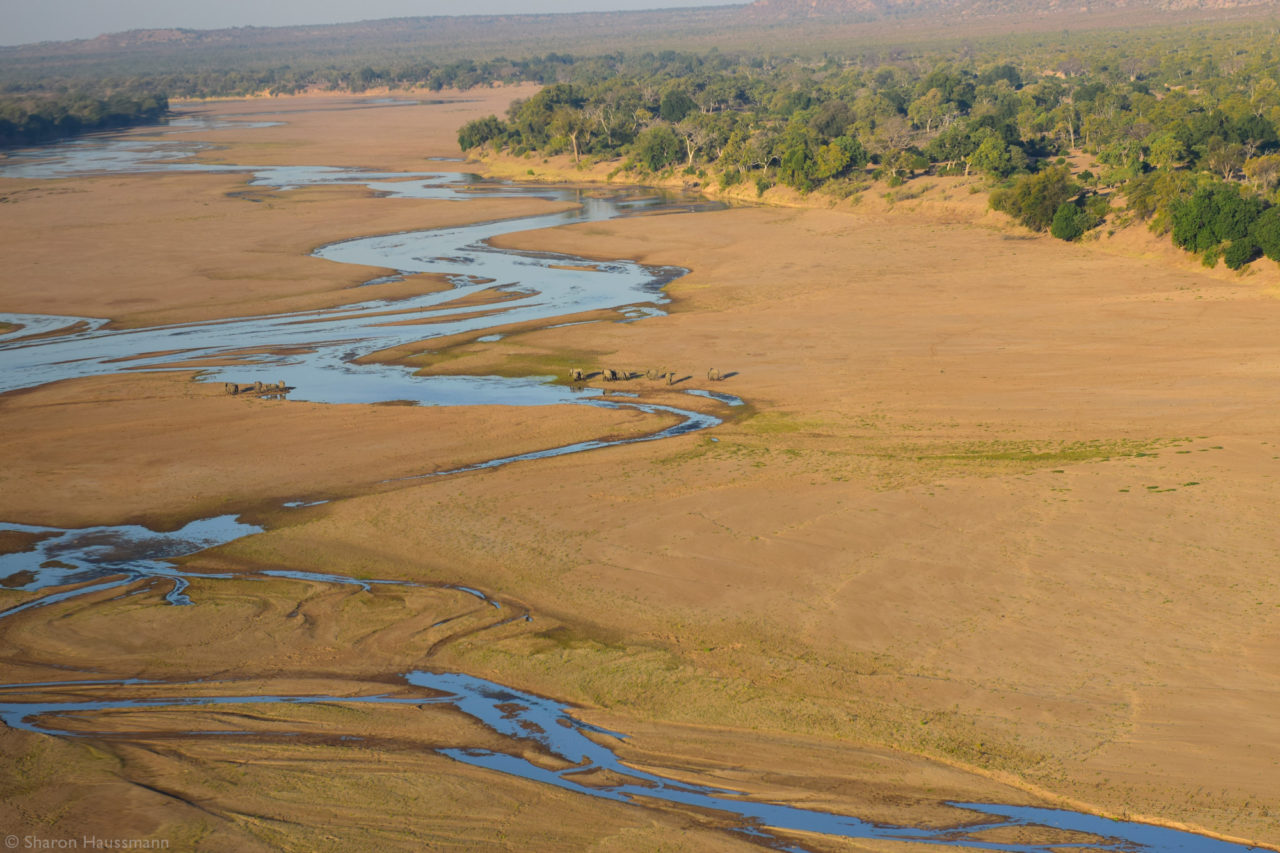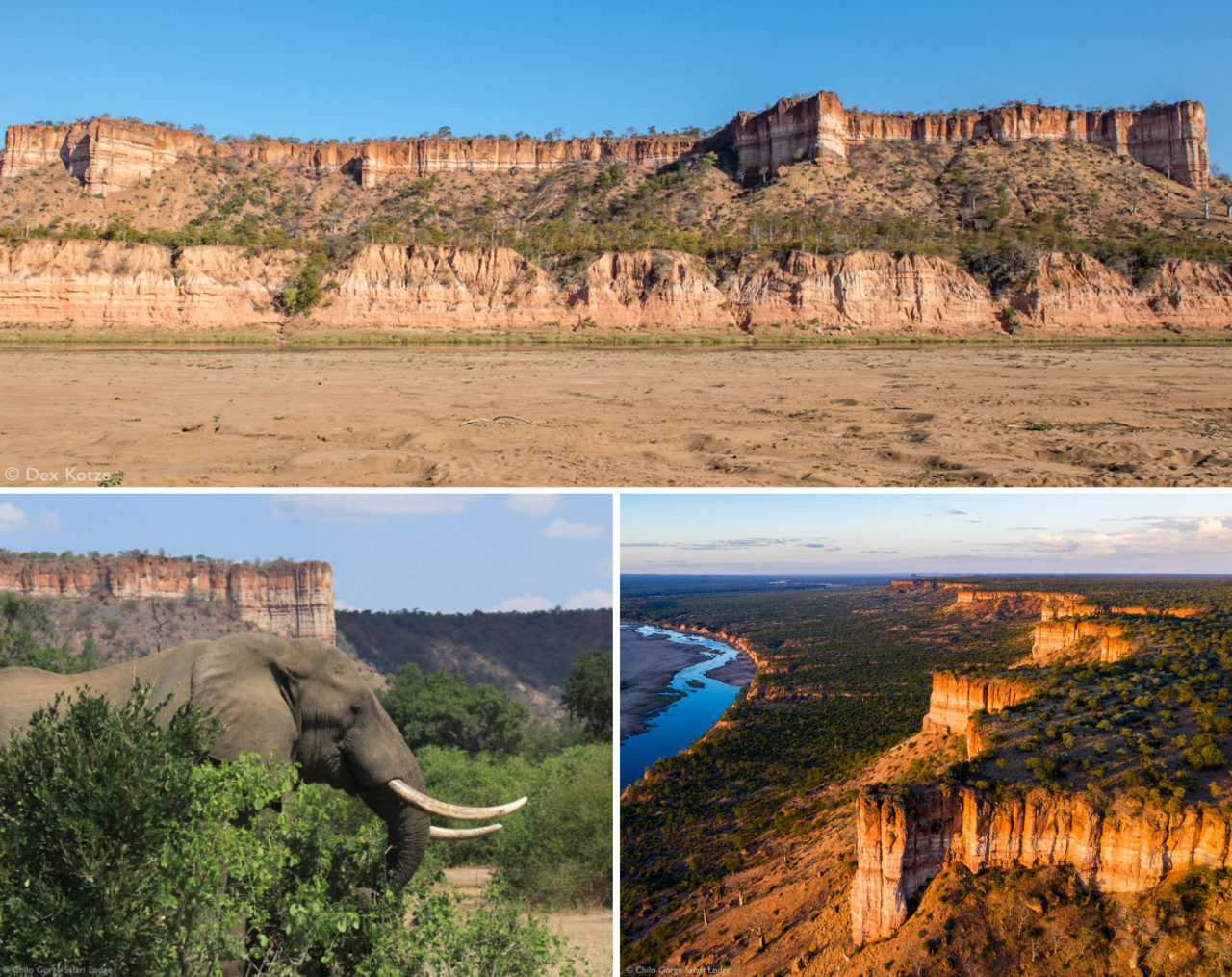Restoring Gonarezhou National Park
016-06-05 12:30 - Scott Ramsay
National parks across Africa face immense challenges, but the resurrection of Gonarezhou National Park in Zimbabwe is a shining example of what conservationists can achieve with support from international funders and local government.
The wilderness in the south-eastern lowveld of Zimbabwe has seen its fair share of bad times. In early colonial days, hunters like Bvekenya Barnard shot what they wanted; in his case, about 300 elephants.
Before the proclamation of the national park in 1975, in efforts to rid the area of tsetse fly, about 13 000 wild animals were shot and forests and pans were bulldozed. The land was enclosed with wire fencing, and sprayed with pesticides like dieldrin and DDT, which concentrated up the food chain, killing off apex predators like fish eagles.
When the park was proclaimed, wildlife populations started rebounding but during the Mozambican civil war soldiers fed themselves by snaring wild animals. Between 1971 and 1991, authorities culled almost
ten thousand elephant.
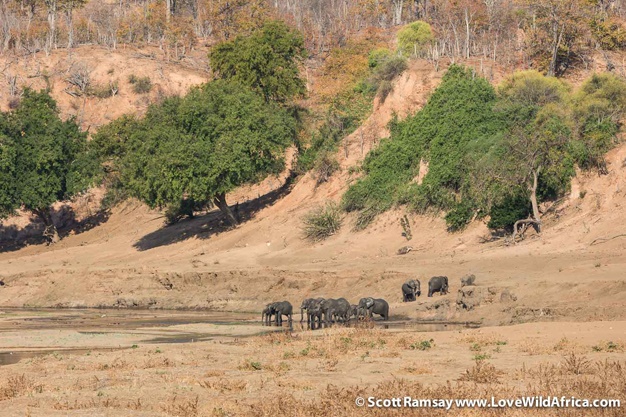
Then the country’s political reputation worsened to an all-time nadir in 2005. Local governance slid into disarray. Zimbabwe Parks and Wildlife receive no subsidies from national government, so when funding from tourism and hunting in the park’s buffer zones dried up, the organization had little money to fund Gonarezhou.
Trapped between financial and political constraints, the park was rescued by Frankfurt Zoological Society, a German NGO that funds restoration of globally-important wilderness areas.
Hugo van der Westhuizen and his wife Elsabe started working here for FZS in 2007, alongside area manager Evious Mpofu from Zimbabwe Parks and Wildlife.
Hugo is a conservation manager and Elsabe is an ecologist.
Because of the collapse of the Zimbabwean dollar at that time, ranger salaries were effectively worthless.
“The first night I arrived in 2007, I woke up to gunfire outside my tent, and only realized the next morning it was rangers shooting impala for staff rations,” said Hugo.
FZS now pays almost all operational costs, including the salaries of 100 staff that have been appointed to work alongside about 80 existing park rangers (who are still paid by Zimbabwe Parks and Wildlife). Anti-poaching patrols were ramped up significantly. All ration hunting by rangers were stopped.
FZS now fund rations, anti-poaching training, vehicles, diesel, aircraft, aerial surveys, vegetation mapping and the maintenance and construction of all roads, fences and tourism facilities.
A major step was the erection of a US$750 000 electrified fence on the north-western park boundary. About 3 000 Zimbabweans and about 7 000 of their cattle had started living inside the park. Although Gonarezhou would never make good agricultural or grazing land, local communities had seen few benefits from conservation in the last decade.
When the park was proclaimed, several Shangaan communities were moved out of Gonarezhou. There was inevitable bitterness, but local people still benefited from hunting revenue in the buffer zones, which also happened to protect the natural habitat surrounding the park.
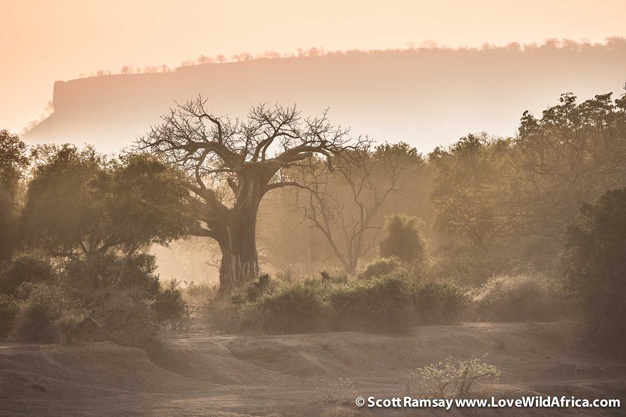
With the decline of Zimbabwe’s political situation, revenue from hunting in the community buffer areas declined. Disenchanted and left with few options, the local Shangaans started using the park to graze their cattle.
“We lost 9 000 hectares of the park to cattle. It’s gone. As conservationists, we hate fences but there must be some fortress conservation, otherwise boundaries aren’t respected,” said Hugo.
Field rangers were appointed to patrol the parks’ borders. Gonarezhou has an unfenced 110 km border with Mozambique where nine hunting areas are interspersed with poor communities desperate for protein. Snare poaching and poisoning was once rife along the border, but has been reduced to manageable levels.
The results of all the hard work are now clear to see. Wildlife numbers are currently booming. The 2014 aerial survey counted just over 11 000 elephants in Gonarezhou, more than the whole of Mozambique, or 2 per square kilometre, one of the highest densities in Africa.
At the last count in 2014, there were about 8 000 impala, 6 000 Cape buffalo, 1 700 kudu, 1 300 Burchell’s zebra, 900 wildebeest, 500 giraffe and 500 hippo.
The predator survey in 2015 showed there are approximately 125 lions, up from just 31 in 2009. Other predators have also increased significantly: 642 spotted hyena (from 407), 279 wild dog (from 30) and 90 cheetah (from 22).
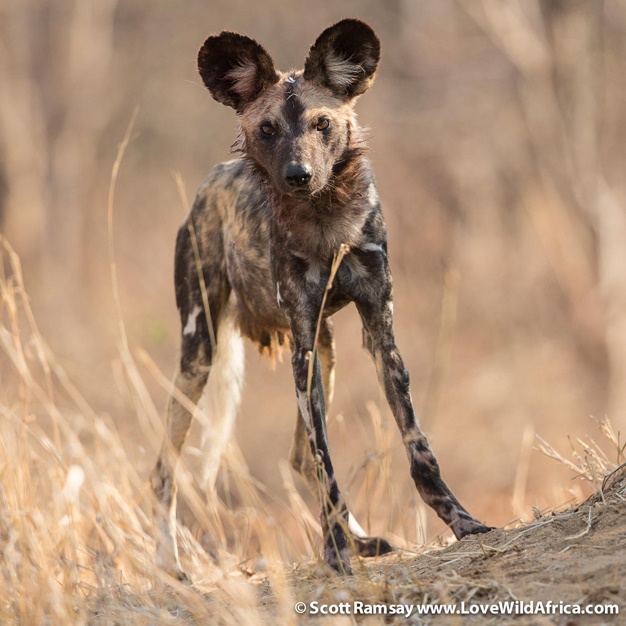
Roan and sable have never recovered to former levels, and Lichtenstein’s hartebeest and black rhino are now locally extinct, but on the whole, wildlife is once again thriving.
And visitors are once again returning to Gonarezhou. In 2015 more than 7 000 arrived, up from a handful in 2007.
Poaching for ivory has also increased, however. Rangers found 40 fresh carcasses in 2013, and 32 in 2014. By the end of 2015, there were between 57 and 66 carcasses attributed to poaching. (The exact figure is unclear, because some of the elephants may have been killed in previous years.) A large proportion of these were within proximity of the unfenced Mozambican border.
The current tide of elephant poaching from East Africa is coming south, and protected areas like Gonarezhou, Hwange, Chobe and Kruger, with their large elephant populations, are in the firing line.
“Gonarezhou is beginning to feel the pressure from the regional surge in poaching,” said Hugo. “We’ve put measures in place to deal with it, and we’re doing our best to keep poaching at a manageable level, so that when hopefully demand for ivory eventually drops away, there’ll still be lots of elephants.”
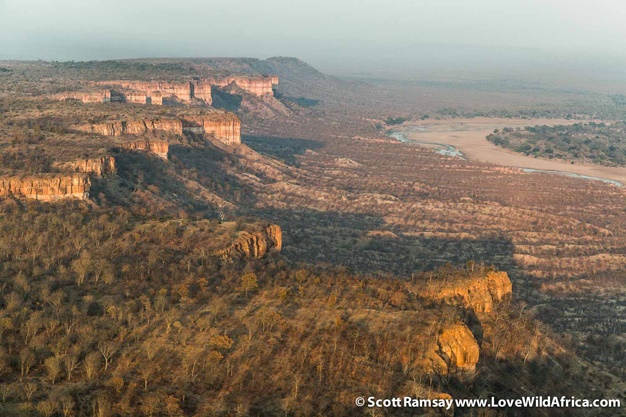 Travel advisor
Travel advisor
For the self-drive traveller, Gonarezhou is only for fully self-sufficient 4x4ers and bush aficionados. There are no fences around the campsites, and wild animals are often in close proximity. There is no cell phone coverage, and the roads are poor, so it takes a long time to get anywhere. River crossings can be tricky. There is no food or drinks sold at the park, although firewood can be bought.
Alternatively, you can arrange with Chilo Gorge Lodge or Gonarezhou Bush Camps to fly into Gonarezhou.
For travellers who want a guided safari, Anthony Kaschula is the park’s most respected private guide, and offers fully serviced safaris from his private Gonarezhou Bush Camp.
http://www.gonarezhou-bushcamps.com.
When to go
The best time of year is dry season, between May and November. This is when the park is most accessible. During wet season, the Limpopo, Runde and Save Rivers are in flood, and are impossible to cross in a 4x4. Even in July or August, the Save River can be flooded, so aim to travel to Gonarezhou around September or October.
Stay here
For the self-drive explorer, Gonarezhou has several small campsites. Most of the best ones are in the north-east of the park, on the Runde River.
Chipinda Pools has four tented chalets each sleeping four people, with en-suite bathroom and kitchen. There are also several campsites with thatched gazebos and communal ablutions.
The best campsites, however, are further into the park, but have more basic facilities. Runde Gorge, Fishans, Directors, Hlaro, Chilojo, Bopomela, Lisoda, Chitove and Chamuluvati are so-called exclusive campsites, so each camp can only be booked by one group. Only facilities are long-drop toilets. A maximum of 12 people and three vehicles per campsite. My favourites were Hlaro, Chilojo and Chitove.
Chinguli is a developed campsite, which has communal ablutions, thatched gazebos and running water. Only 6 people and two vehicles allowed per camp site.
For visitors who want a guided, fully-serviced and catered safari experience, then Gonarezhou Bush Camp is the best. Operated and owned by respected guide Anthony Kaschula, this tented camp on the banks of the Runde River looks out onto the Chilojo Cliffs. Visitors are treated to guided walks in the mornings, and drives in the afternoon.
http://www.gonarezhou-bushcamps.com.
Chilo Gorge Lodge on the eastern side of the Save River has superb views over the Save River and into Gonarezhou. Guided game drives from the lodge into the park every day. SADC rates are $161 for self-catering lodge sleeping two people, and $150 per person per night for fully-catered luxury room. Tel +263-77-499-9059, e-mail
info@chilogorge.com,
http://www.chilogorge.com.
 ©ngoko.com
©ngoko.com ©roar.africa.com
©roar.africa.com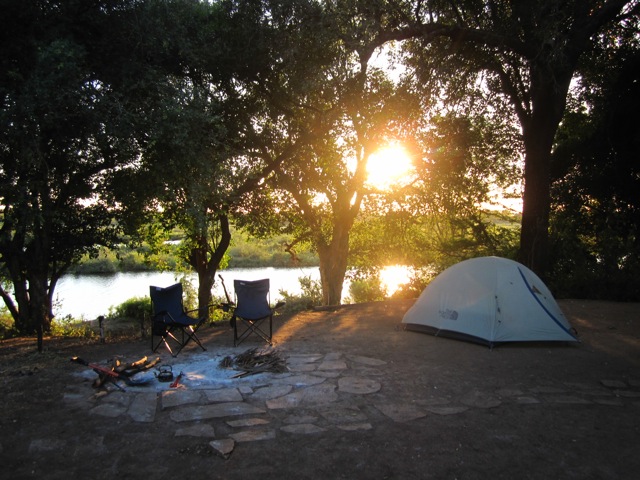 ©worldcupandup.com
©worldcupandup.com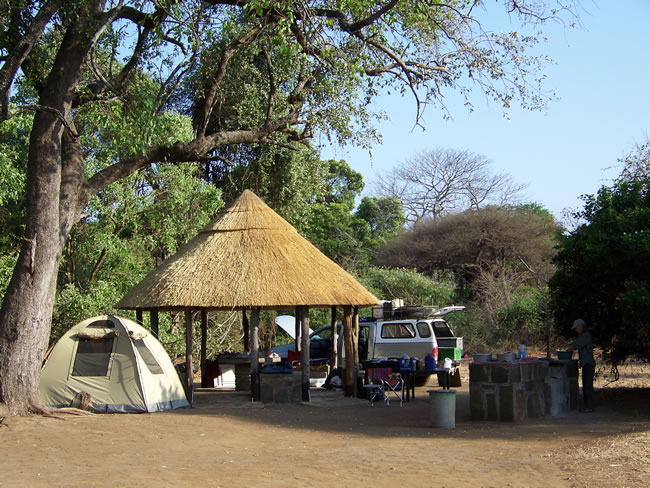 ©kalahari-tours.co.za
©kalahari-tours.co.za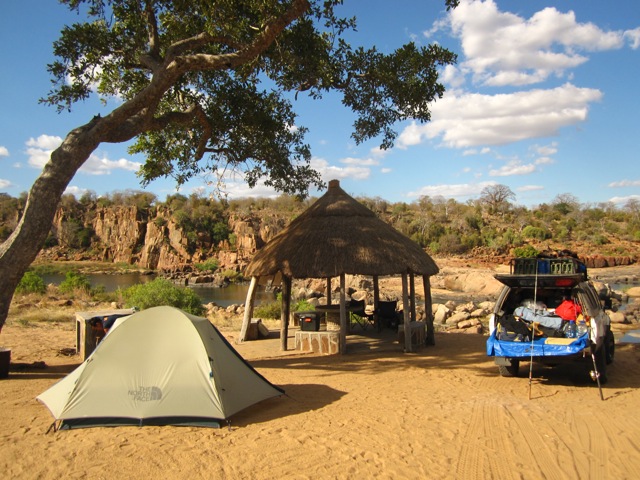 ©worldcupandup.com
©worldcupandup.com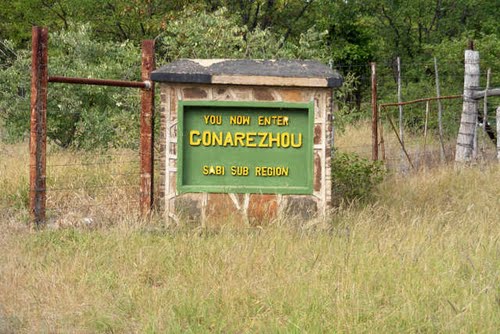 ©alltravels.com
©alltravels.com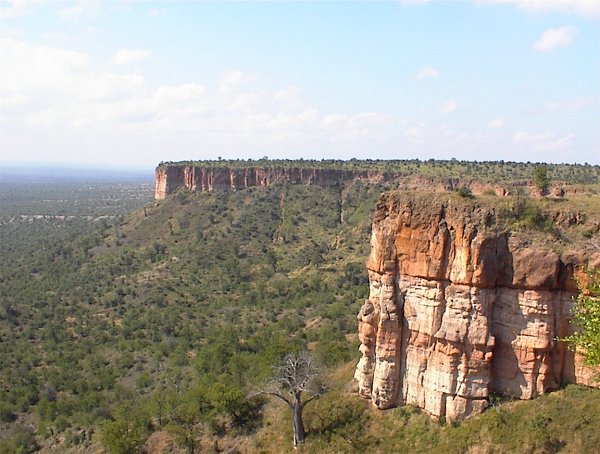 ©overland.co.za
©overland.co.za ©africafreak.com
©africafreak.com








